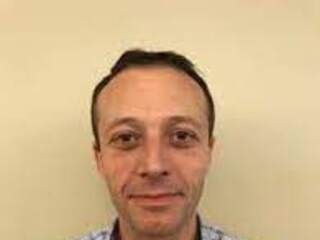Zainab Ali has always searched for opportunity. As a girl, she did science experiments in her backyard. As a high schooler, she went to weather camp. And as a graduate student, she applied and was selected for a summer internship at NASA’s Jet Propulsion Laboratory during the pandemic. She is a Ph.D. student at the University of Florida, where she studies how accurately satellites can measure rainfall during hurricanes.
What childhood experiences got you interested in science?
My parents were very nurturing when it came to the sciences. We’d do science experiments at home or go to museums, so that was always part of my life. We spent a lot of time in the library. We’d put Mentos mints into Coke and watch them explode in the backyard – the fluid will get foamy and really expand. You can watch videos online showing people doing this.
Plus, my mom’s side of the family is from Alabama, and my grandmother worked for the U.S. Space and Rocket Center in Huntsville. It has a couple of big rockets and you can learn what’s inside them and about the training astronauts have to do before they go up into space. I grew up visiting it and it’s really, really cool.
What have you studied in school, and how did you choose the topics?
I did my bachelor’s in meteorology, and now I’m doing my Ph.D. in geography. I was interested in weather because it affects humans and our lives. My dad’s side of the family is from Greensboro, North Carolina. In high school, we would visit Greensboro every summer, and junior year, I did a weather summer camp there. We got to meet with meteorologists. We did experiments. Tornados, hurricanes… as a kid, that was super intriguing.
How did your college experience help you?
I was at North Carolina A&T State University. It was a relatively small program. I knew everyone in the department, and that helped in terms of getting internships and research experience.
How did you end up as an intern at JPL?
At an early stage of my undergrad, my mentors really instilled in me that every year students should look for a research experience or internship. That habit continued during graduate school. I searched for NASA internships and I landed on the JPL site for student opportunities in STEM. And I applied. You tell them your interests, your background, and they try to match your qualifications with an internship supervisor who meets your criteria. JPL reached out to me with a project in mind that fit, and asked if I’d like to work on it.
I liked the option I got. I got to speak with my supervisor, Christine Lee, before I made the decision. I wasn’t going in completely blind.
What was the focus on your internship?
Basically, I studied algal blooms in California. I studied a water reservoir, or lake, that is used for recreational purposes. California issues advisories if it’s safe to get in the water to swim or to go out on boats. This project was trying to help make those decisions for different parts of the lake, based on if one part of the reservoir has more algae than the other. I used both data collected directly at the lake by the California Department of Water Resources, and satellite data collected from space. I wouldn’t say my project was hard, just time-consuming. I learned new things, and if the opportunity came up, I wouldn’t mind continuing on with it. It’s very interesting and different from my normal Ph.D. research.
What are your favorite and least favorite parts of research?
My favorite part is the result, because I’m coming up with results that are tangible, understandable, and going to be beneficial. My least favorite part is when there’s roadblocks or an error in my data programming script that doesn’t work, or the program crashes, and the technical issues. That and reading the papers. They’re just so long.
Would you recommend an internship at JPL to your friends?
Yes, most definitely, in fact, I actually did share it with my friends. I said, apply! It’s a great opportunity, super-easy application – what’s not to like?



